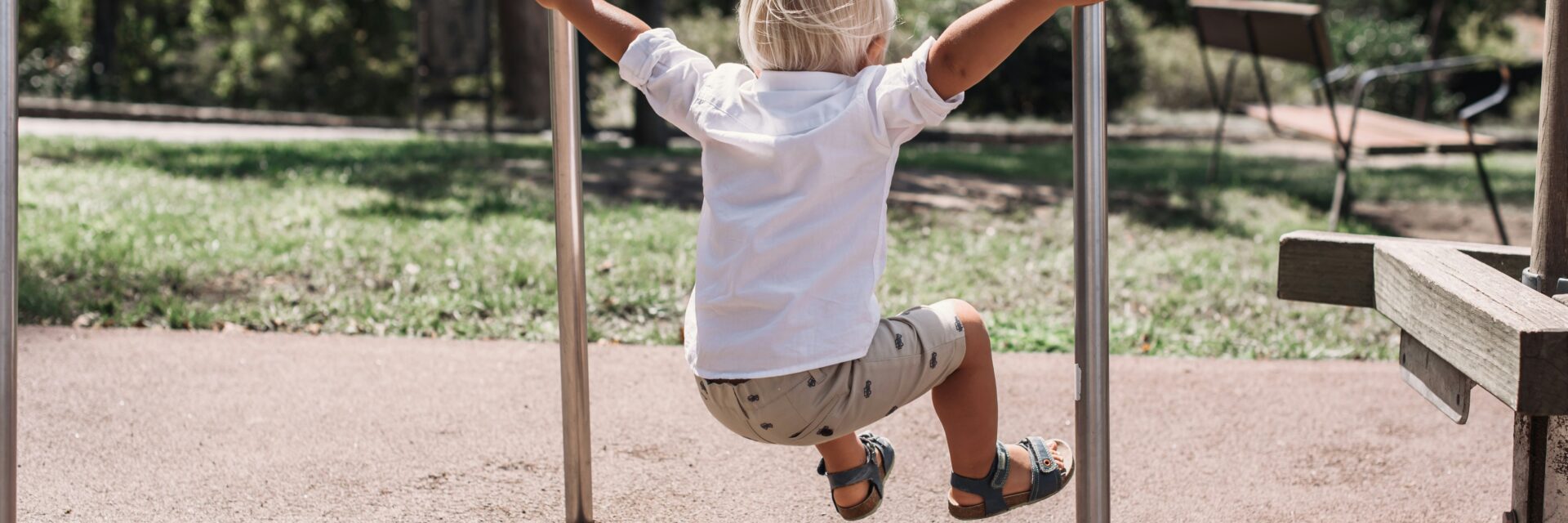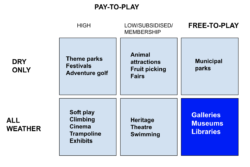- What We Do
- Understanding your audience
- Engaging new audiences
- Designing experiences
- Building loyalty

Taking play seriously
With quality play options for children in short supply, it’s heartening to see how cultural venues are filling a unique gap. But could we be doing even more? Director Guy Turton shares his reflections.
Written on National Play Day, 7 August 2024.
A lack of places to play
I’ve a four year old son and four week old daughter. It’s the summer holidays. We need escape routes from the house. The default option is the park and its playground.
But the playground in our local park in Manchester is tiny, old, metal, boring, unsafe.
Right opposite the park is the school our son attends. Last month, they built a brand new playground at the school. We can see it through the school gates as we leave the park opposite – almost mocking us.
By contrast, in Denmark, you’ll find school playgrounds open in evenings, holidays and weekends for children to enjoy. This reflects a national acknowledgment of the importance of play in the development of happy and curious citizens.
The dearth of quality play options for children in Manchester was the motivation for the city’s first new park in over 100 years, complete with a truly awesome playground.
However, being in rainy Manchester, outdoor play isn’t always a great option.
Of course, the weather doesn’t have to be an obstacle. Australia, for example, excels at creating shade to maximise outdoor play areas. In Australia, shaded picnic tables and BBQs are everywhere, so people can enjoy outdoor spaces comfortably. But as mentioned, here in Manchester, and across the UK, our challenge is often the rain rather than the sun – a challenge that’s rarely taken into account in public playground design.
And whilst there is no shortage of indoor choice (Europe’s largest soft play, climbing walls, dinosaur golf, swimming pools, trampoline parks, cinema, Batman exhibitions… the list goes on), they are often expensive and rarely fulfilling for all of us.
Filling an urgent gap
This reveals a market need which galleries, museums and increasingly heritage sites are confidently stepping into.
In Manchester we’re lucky to have a huge range of cultural organisations offering inventive, and often free, family engagement in all weather: The Lowry, HOME, Whitworth Art Gallery, Aviva Studios, Z-Arts, Manchester Museum, IWM North, People’s History Museum, Manchester Art Gallery, Manchester Central Library, RHS Bridgewater, several National Trust sites and many more besides – all with genuinely engaging things for kids to do in and outside of the holidays.
We’re seeing across the sector the commercial benefits of galleries, museums and heritage sites introducing playgrounds: driving repeat visits, diversity, membership and secondary spend. The largest increase in 2023 visit figures reported by ALVA in England was Burghley House, with an 86% increase in visits after the introduction of an adventure playground. And English Heritage are opening up beautifully crafted and fun play areas sensitive to their historically significant surroundings. Through innovative spatial design we’ve seen a movement towards play zones and wild play which are sympathetic to the built and natural heritage they occupy.
It feels like the sector has moved beyond a (largely unfounded and untested) fear of potential negative impacts of inviting our audiences to play – both children and grown-ups.

Everything to play for
But what comes next? I’m excited by a future where, as in Denmark, play is taken even more seriously. Where it is built in, not bolted on to organisational strategy. Is there greater scope to meet this need? How can play be less limited to playgrounds, holiday activities, trails and the extremely tight budgets of learning and engagement departments. I’d love to hear examples from across the sector on where play is all powerful.
Evaluating the benefits
Evaluation can demonstrate the impact of play and evidence its commercial impact. Book a call with Guy today to talk about how evaluation can help your organisation to drive objectives.
- Engaging new audiences
- Understanding your audience
